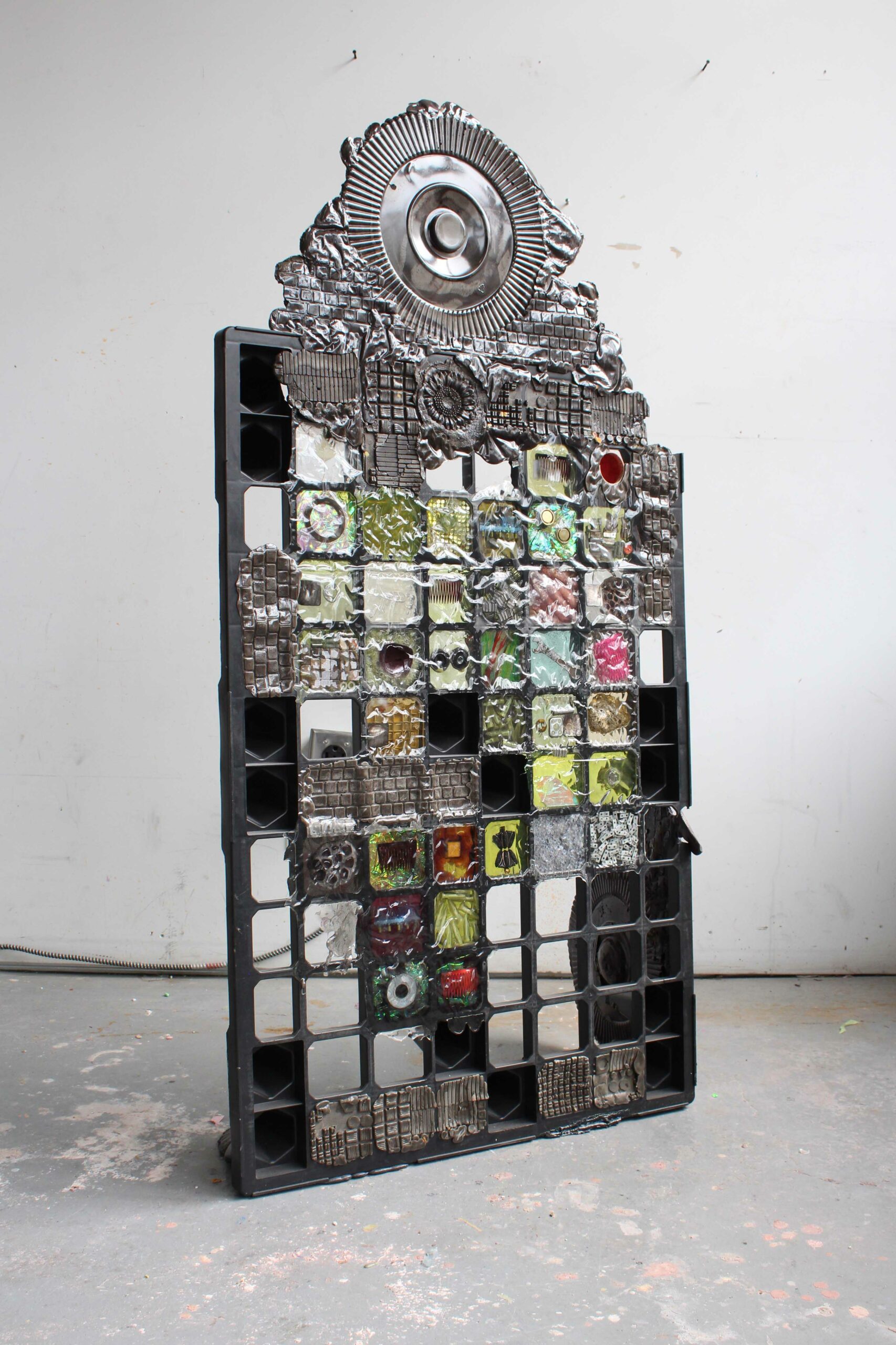Biography
Amy Brener (born 1982 in Victoria, BC, Canada) lives and works in New York. She received the NYFA Fellowship for Crafts/Sculpture in 2015, attended Skowhegan School of Painting and Sculpture in 2011 and graduated with an MFA in Sculpture from Hunter College in 2010. Her work was included in the exhibition « Greater New-York » in 2015 at MoMA PS1 in New York ; at Jack Barrett, New-York, Wentrup Gallery in Berlin, Derek Eller Gallery and the Katonah Museum of Art in New York, Susan Hobbs Gallery in Toronto, PACT in Paris etc. Her work can be found in the Braunsfelder Family Collection and the Dewoody Collection.
Using mold-making and casting, Amy Brener takes utilitarian objects to make timeless sculptures: she casts computer keyboards, pills within pill containers, and other everyday items, and amalgamates the results in sculptures. Through this process, Brener strips objects of their functionality, asking viewers to see them abstractly in relation to ritual and archaeological practices. Employing new materials and creating new semi-figurative sculpture, her latest work combines objects and materials that, meshed together, compress time and space, and evoke a feeling of nostalgia.
Amy Brener (née en 1982 à Victoria, Canada) vit et travaille à New York. Après avoir été diplomée de la Skowhegan School of Painting and Sculpture en 2011 et d’un Master of Fine Arts (MFA) en sculpture au Hunter College de New York en 2010, Brener a a reçu la bourse Métiers d’art/Sculpture de la New York Foundation for the Arts en 2015. Son travail a été présenté dans le cadre de l’exposition « Greater New York » au MoMa PS1 à New York et au Katonah Museum of Art à New York (2016). Les galeries Jack Barrett à New-York, Wentrup à Berlin, Derek Eller à New York, Susan Hobbs à Toronto, et PACT à Paris ont notamment exposé ses travaux. Ses sculptures font partie des collections Braunsfelder et Dewoody.
Utilisant le moulage pour réaliser ses sculptures, Amy Brener glane des objets utilitaires -des peignes, de la quincaillerie, des brosses à dents, des montres, des claviers d’ordinateur, des pilules dans des boîtes à pilules et d’autres objets de la vie quotidienne, qu’elle fusionne pour obtenir ses oeuvres. Par ce procédé, Brener dépouille les objets de leur fonctionnalité, enjoignant le spectateur de les regarder de manière abstraite, comme il regarderait un objet issu d’une pratique rituelle ou archéologique. En créant de nouvelles sculptures semi-figuratives, son dernier travail combine des objets et des matériaux qui, en s’imbriquant les uns dans les autres, compriment le temps et l’espace et évoquent un sentiment de nostalgie.


